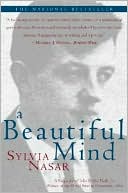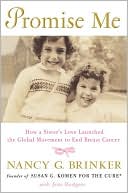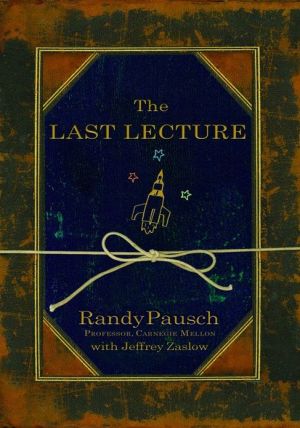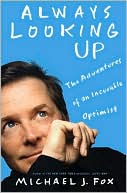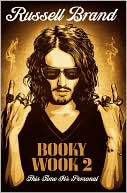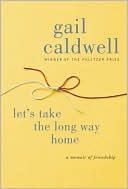A Beautiful Mind: A Biography of John Forbes Nash, Jr., Winner of the Nobel Prize in Economics, 1994
Search in google:
The bestselling, prize-winning biography of a mathematical genius who suffered from schizophrenia, miraculously recovered, and then won a Nobel Prize. Salon - Richard Dooling "Read no history: nothing but biography," Disraeli once wrote, "for that is life without theory." In A Beautiful Mind, Sylvia Nasar, an economics correspondent for The New York Times, presents the life "without theory" of John Forbes Nash Jr., a mathematical genius and inventor of theories of rational behavior, who was a Wunderkind at Princeton when it was populated by the likes of Albert Einstein, John von Neumann and other 20th century luminaries. Nash's 26-page Ph.D. thesis, "Non-Cooperative Games" (written at Princeton, while he was still in his early 20s), eventually won him a Nobel Prize in economics in 1994, but only after his career was interrupted by a 30-year bout with paranoid schizophrenia.Disraeli's admonition is well taken here, because Nasar's story of Nash's career presents a case study in the mysterious relationship between genius and madness, and a possible metaphor for a civilization that has seen the miraculous achievements of 20th century science overshadowed at times by the madness of nuclear war -- a tale that could have been smothered by historical or psychiatric theories.A Beautiful Mind chronicles Nash's ascent to the Olympian heights of Princeton, the infamous postwar RAND think tank and MIT, where Nash mingled with many of the geniuses who had arguably "won" World War II by applying math, science and game theories to the deadly arts of nuclear war. Despite his condescending manner and personality quirks -- Nash was known for incessantly whistling Bach's Little Fugue, chewing empty coffee cups and having notoriously complicated romantic relationships with both men and women -- he flourished in the elite hierarchy of first-rate mathematicians. Most of his peers agreed with the eminent geometrician Mikhail Gromov, who called Nash "the most remarkable mathematician of the second half of the century."In a profession that "placed a certain premium on eccentricity and outrageousness" and in which "a lack of social graces was considered part and parcel of being real mathematicians," Nash was more outrageous, eccentric and lacking in social skills and emotional attachments than most. But no matter how outlandish his behavior, Nash survived, even excelled, despite his haughty, sometimes cruel treatment of loved ones and colleagues.Then, when Nash was barely 30 and about to be made a full professor at MIT, his friends and fellow mathematicians witnessed a "strange and horrible metamorphosis" that began when Nash dressed as an infant at a New Year's Eve party in 1958, and then crossed the line two weeks later when he slouched into the common room at MIT with a copy of The New York Times, claiming that "abstract powers from outer space, or perhaps it was foreign governments, were communicating with him" through the newspaper. For the next 30 years of his life, Nash -- or rather the ghost of Nash -- haunted the campuses where he had previously reigned as a genius, until he emerged from his delusions and accepted the Nobel Prize for Economics in 1994.Nasar shows admirable restraint in presenting the seamier details of Nash's private life; she manages to stay focused on telling the story of a genius who became a schizophrenic, without overreaching and attempting explanations. Instead of facile theories, the reader enjoys wonder and astonishment -- frightened and intrigued by the intimate juxtaposition of genius and mental illness in a single beautiful mind. Nash said it best when a teaching associate asked him how he could believe that aliens were sending him coded messages. He responded: "Because the ideas I had about supernatural beings came to me the same way that my mathematical ideas did. So I took them seriously."
CONTENTS Prologue............................................................11 Part One: A Beautiful Mind 1 Bluefield (1928-45).........................................25 2 Carnegie Institute of Technology (June 1945-June 1948)......40 3 The Center of the Universe (Princeton, Fall 1948)...........49 4 School of Genius (Princeton, Fall 1948).....................58 5 Genius (Princeton, 1948-49).................................66 6 Games (Princeton, Spring 1949)..............................75 7 John von Neumann (Princeton, 1948-49).......................79 8 The Theory of Games.........................................83 9 The Bargaining Problem (Princeton, Spring 1949).............88 10 Nash's Rival Idea (Princeton, 1949-50).....................92 11 Lloyd (Princeton, 1950)....................................99 12 The War of Wits (RAND, Summer 1950).......................104 13 Game Theory at RAND.......................................115 14 The Draft (Princeton, 1950-51)............................123 15 A Beautiful Theorem (Princeton, 1950-51)..................128 16 MIT.......................................................133 17 Bad Boys..................................................139 18 Experiments (RAND, Summer 1952)...........................147 19 Reds (Spring 1953)........................................152 20 Geometry..................................................155 Part Two: Separate Lives 21 Singularity...............................................167 22 A Special Friendship (Santa Monica, Summer 1952)..........169 23 Eleanor...................................................172 24 Jack......................................................180 25 The Arrest (RAND, Summer 1954)............................184 26 Alicia....................................................190 27 The Courtship.............................................199 28 Seattle (Summer 1956).....................................203 29 Death and Marriage (1956-57)..............................208 Part Three: A Slow Fire Burning 30 Olden Lane and Washington Square (1956-57)................215 31 The Bomb Factory..........................................222 32 Secrets (Summer 1958).....................................228 33 Schemes (Fall 1958).......................................235 34 The Emperor of Antarctica.................................239 35 In the Eye of the Storm (Spring 1959).....................248 36 Day Breaks in Bowditch Hall (McLean Hospital, April-May 1959)................................................253 37 Mad Hatter's Tea (May-June 1959)..........................262 Part Four: The Lost Years 38 Citoyen du Monde (Paris and Geneva, 1959-60)..............269 39 Absolute Zero (Princeton, 1960)...........................283 40 Tower of Silence (Trenton State Hospital, 1961)...........288 41 An Enforced Interlude of Rationality (July 1961-April 1963)...............................................295 42 The "Blowing Up" Problem (Princeton and Carrier Clinic, 1963-65)...............................................305 43 Solitude (Boston, 1965-67)................................314 44 A Man All Alone in a Strange World (Roanoke, 1967-70).....323 45 Phantom of Fine Hall (Princeton, 1970s)...................332 46 A Quiet Life (Princeton, 1970-90).........................340 Part Five: The Most Worthy 47 Remission.................................................349 48 The Prize.................................................356 49 The Greatest Auction Ever (Washington, D. C., December 1994).................................................374 50 Reawakening (Princeton, 1995-97)..........................379 Notes..............................................................389 Select Bibliography................................................435 Acknowledgments....................................................439 Index..............................................................441
